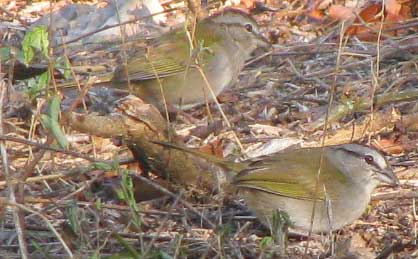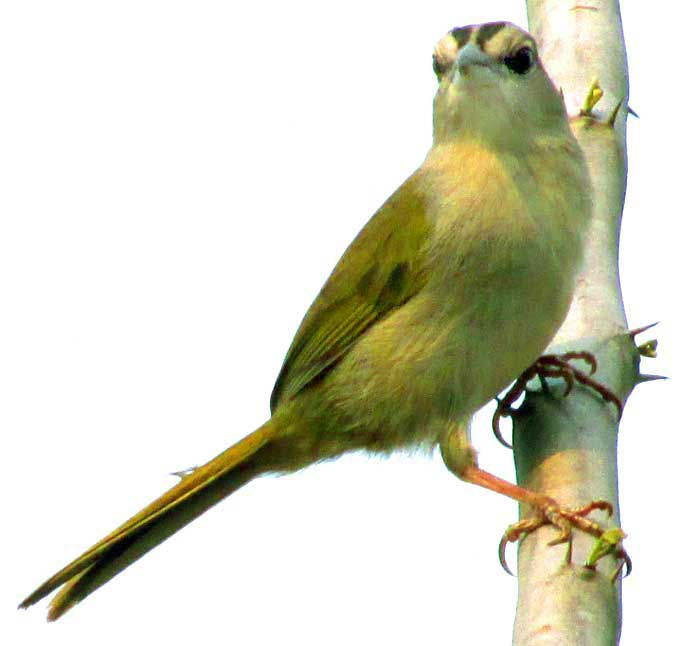Excerpts from Jim Conrad's
Naturalist Newsletter
from the January 31, 2010 Newsletter issued from Hacienda Chichen Resort beside Chichén Itzá Ruins, central Yucatán, MÉXICO; limestone bedrock, elevation ~39m (~128ft), ~N20.676°, ~W88.569°
OLIVE SPARROWS, PROBABLY
On a forest trail at dawn I sat warming in a shifting ray of sunlight. Twenty feet up the trail a couple of little sparrows hopped, scratched and pecked, keeping a wary eye on me. You can see the peaceful pair below:

According to Howell's reckoning, in our area we have two very similar, possibly merging species looking like those in the picture. The more widely ranging species, occurring in most of Mexico and into southern Texas, is the Olive Sparrow, ARREMONOPS RUFIVIRGATUS. The other species is the Green-backed Sparrow, Arremonops chloronotus, endemic to southeastern Mexico, northern Guatemala, Belize and a bit of Honduras. The two species' distributions may overlap in our area, though the Green-backed is shown as a bit farther southeast of us. However, Howell describes the Green-backed Sparrow's taxonomic status as not fully resolved, and I wouldn't be surprised if Green-backed Sparrows prove to be just a variation of the more common and variable Olive Sparrow.
You've probably noticed that North America is rich in sparrows; within its pages my old fieldguide refers to 33 species as sparrows. In the Yucatan only three sparrow species are permanent residents -- the Botteri's being the third -- though several northern sparrows migrate through here or overwinter. Sparrows are mostly products of the Temperate Zone.
Down here we do have a world of other kinds of small, thick-billed, seed-eating, sparrow-like bird types, however, such as grassquits, buntings and seedeaters.
issued May 14, 2020 from the forest just west of Tepakán; elev. ~9m (~30 ft), N21.053°, W89.052°; north-central Yucatán state, MÉXICO
THE OLIVE SPARROW'S HEAD STREAKS
In field guides usually illustrations are from the side, so what's happening at the very top of the head isn't shown well. Olive Sparrows have a fancy part on top, as shown below:
